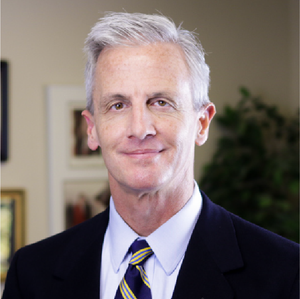Higher Education
Jonathan Small & Brandon Dutcher | January 1, 2017
Common-Sense Higher Ed Reforms
Jonathan Small & Brandon Dutcher
“Tuition and fees increases over the past five years at Oklahoma’s public higher education system are among the country’s highest, according to The College Board,” education researcher Vicki Alger wrote in The Oklahoman on August 16, 2016. “The State Regents for Higher Education blame ‘underfunding,’ but that excuse doesn’t hold water.
“From 2008-09 through 2015-16, state funding dropped 17 percent, but tuition and fees jumped 38 percent, according to the Regents’ own data,” Dr. Alger wrote. To help bring discipline to the higher education system and to make college more affordable for students, we offer the following recommendations:
-
State lawmakers should enact a moratorium on tuition and fee increases for the next three years, after which time the regents would be given the authority to increase tuition to keep pace with inflation only.
-
The FY-2018 state appropriation for the State Regents for Higher Education should be the same as the FY-2017 appropriation.
-
State lawmakers should remove any effects of the “peer-factor multiplier,” which over-reimburses colleges and universities for courses.
-
The Oklahoma State Regents for Higher Education should create and run a program to provide 40 hours of low-tuition general education. An “Oklahoma Freshman Academy” would provide Oklahoma residents low-cost general education courses that can be transferred and count towards a degree offered by an Oklahoma public college or university. The academy could operate as a web-based portal to approved low-cost online providers and provide tuition reimbursement from existing higher-education funds to students who pass these courses. Provider tuition less reimbursement would be lower than in-state tuition at public universities and in many cases may be zero. Indeed, this academy will likely provide Oklahoma residents with the ability to earn more than one year of college free. Moreover, the state saves money because tuition reimbursement is set lower than the subsidy payments the state makes to public colleges and universities.
-
State lawmakers should enact ALEC (American Legislative Exchange Council) model legislation aimed at college affordability: “To aid students and their parents in their efforts at pursuing a college degree, the Affordable Baccalaureate Degree Act would require all public four-year universities to offer bachelor’s degrees costing no more than $10,000, total, for four years of tuition, fees, and books. The Act would require that 10 percent of all public, four-year university degrees awarded reach this price-point within four years of passage of this act. To achieve this price-point, universities would be instructed to capitalize on the opportunities and efficiencies provided by (1) web-based technology and (2) competency-based programs.”
-
Higher education officials should reduce non-teaching overhead. We know from Census data that the non-instructional workforce in Oklahoma’s higher education system (as a percent of the private-sector workforce) is 61 percent higher than the national average. It is the 4th highest level in the country. What’s worse, the rate of growth is higher than the national average. To get back to the national average, Oklahoma’s higher education system would have to shed 12,033 non-instructional workers—to 19,701 workers from the current level of 31,734 workers. This would result in total annual savings, on average, of $328,226,106 in wages and salaries—in addition to the millions of dollars in supplemental benefits that would be saved.
-
The state’s two flagship universities should require professors to teach more. SoonerPoll survey data tell us that 82% of Oklahomans believe that “public colleges and universities in Oklahoma could be run more efficiently.” A full 79% believe that “professors should be paid based on how much they teach and not based on writing articles and other non-teaching activities.” Economist Richard Vedder, who helps compile the annual college rankings for Forbes, concluded in 2014 that a small proportion of the teaching faculty at OU and OSU seems to do most of the work: “Large numbers of faculty carry modest teaching loads, yet also have modest research accomplishments. If the bottom 80 percent of the faculty taught as much as the top 20 percent, universities could operate with demonstrably fewer faculty members.” The annual savings to taxpayers would be $181 million.
-
The state regents should create a “Degree Requirements Council,” consisting of employers only, who over a period of two years will evaluate general education requirements, recommending elimination of certain courses.
-
The state regents should create a “Research Review Council,” consisting of employers only, to review research activities and make recommendations concerning usefulness and resource allocation.
-
Higher education officials should create a “teaching only” tenure track for professors.
-
State policymakers should make use of the opportunities available with Western Governors University (WGU). WGU was created 20 years ago by governors in the western United States, including Frank Keating of Oklahoma. WGU does not receive any state government subsidy. It is totally dependent on student tuition. Yet at as little as $6,000 per year, WGU’s tuition is substantially lower than in-state tuition at Oklahoma’s public regional colleges. Indeed, WGU is so much cheaper that the state could pay a student’s full tuition and still save thousands of dollars annually. Following the lead of Indiana, Texas, and other states, Oklahoma policymakers should partner with WGU.
-
State lawmakers should enact ALEC model legislation aimed at capital-spending transparency: “The Higher Education Capital Projects Transparency Act requires a public institution of higher education to develop and promulgate procedures for maximum utilization of existing facilities, to make data on the average weekly usage of classrooms and laboratories available on its website in a format clearly comprehensible to the public, and to hold public discussion of each proposed capital construction project exceeding $10,000,000 in total cost, including, but not limited to, evaluation of utilization of existing campus instructional buildings for a period not less than the three years preceding the construction proposal.”
-
State lawmakers should require that faculty workloads and costs be made available to the public.
-
State lawmakers should require that higher education and college and university lobbying costs be made available to the public, including the individual names of persons handling those duties.
-
State lawmakers should require that higher education and college and university “government affairs” or “legislative liaison” costs be made available to the public.
-
State lawmakers should enact ALEC model legislation aimed at helping employers make informed hiring decisions: “The Honest Transcript Act looks to correct grade inflation by requiring all public colleges and universities to include on student transcripts—alongside the individual grade the student received for each class—the average grade given by the professor for the entire class. This would help potential employers learn whether a given high grade-point average signifies superlative talent or merely that the student completed undemanding courses. The bill does not seek to make universities do anything differently; it only asks them to make transparent for students, parents, and taxpayers what it is they are doing.”
Jonathan Small, CPA, serves as OCPA’s president. Previously, he served as a budget analyst for the Oklahoma Office of State Finance, as a fiscal policy analyst and research analyst for the Oklahoma House of Representatives, and as director of government affairs for the Oklahoma Insurance Department. He holds a B.A. in Accounting from the University of Central Oklahoma and is a Certified Public Accountant.
Brandon Dutcher is OCPA’s senior vice president. He is editor of the book Oklahoma Policy Blueprint, which was praised by Nobel Prize-winning economist Milton Friedman as “thorough, well-informed, and highly sophisticated.” His articles have appeared in Investor’s Business Daily, WORLD magazine, Forbes.com, Mises.org, The Oklahoman, the Tulsa World, and 200 newspapers throughout Oklahoma and the U.S.

Jonathan Small
President
Jonathan Small, C.P.A., serves as President and joined the staff in December of 2010. Previously, Jonathan served as a budget analyst for the Oklahoma Office of State Finance, as a fiscal policy analyst and research analyst for the Oklahoma House of Representatives, and as director of government affairs for the Oklahoma Insurance Department. Small’s work includes co-authoring “Economics 101” with Dr. Arthur Laffer and Dr. Wayne Winegarden, and his policy expertise has been referenced by The Oklahoman, the Tulsa World, National Review, the L.A. Times, The Hill, the Wall Street Journal and the Huffington Post. His weekly column “Free Market Friday” is published by the Journal Record and syndicated in 27 markets. A recipient of the American Legislative Exchange Council’s prestigious Private Sector Member of the Year award, Small is nationally recognized for his work to promote free markets, limited government and innovative public policy reforms. Jonathan holds a B.A. in Accounting from the University of Central Oklahoma and is a Certified Public Accountant.

Brandon Dutcher
Senior Vice President
Brandon Dutcher is OCPA’s senior vice president. Originally an OCPA board member, he joined the staff in 1995. Dutcher received his bachelor’s degree in political science from the University of Oklahoma. He received a master’s degree in journalism and a master’s degree in public policy from Regent University. Dutcher is listed in the Heritage Foundation Guide to Public Policy Experts, and is editor of the book Oklahoma Policy Blueprint, which was praised by Nobel Prize-winning economist Milton Friedman as “thorough, well-informed, and highly sophisticated.” His award-winning articles have appeared in Investor’s Business Daily, WORLD magazine, Forbes.com, Mises.org, The Oklahoman, the Tulsa World, and 200 newspapers throughout Oklahoma and the U.S. He and his wife, Susie, have six children and live in Edmond.